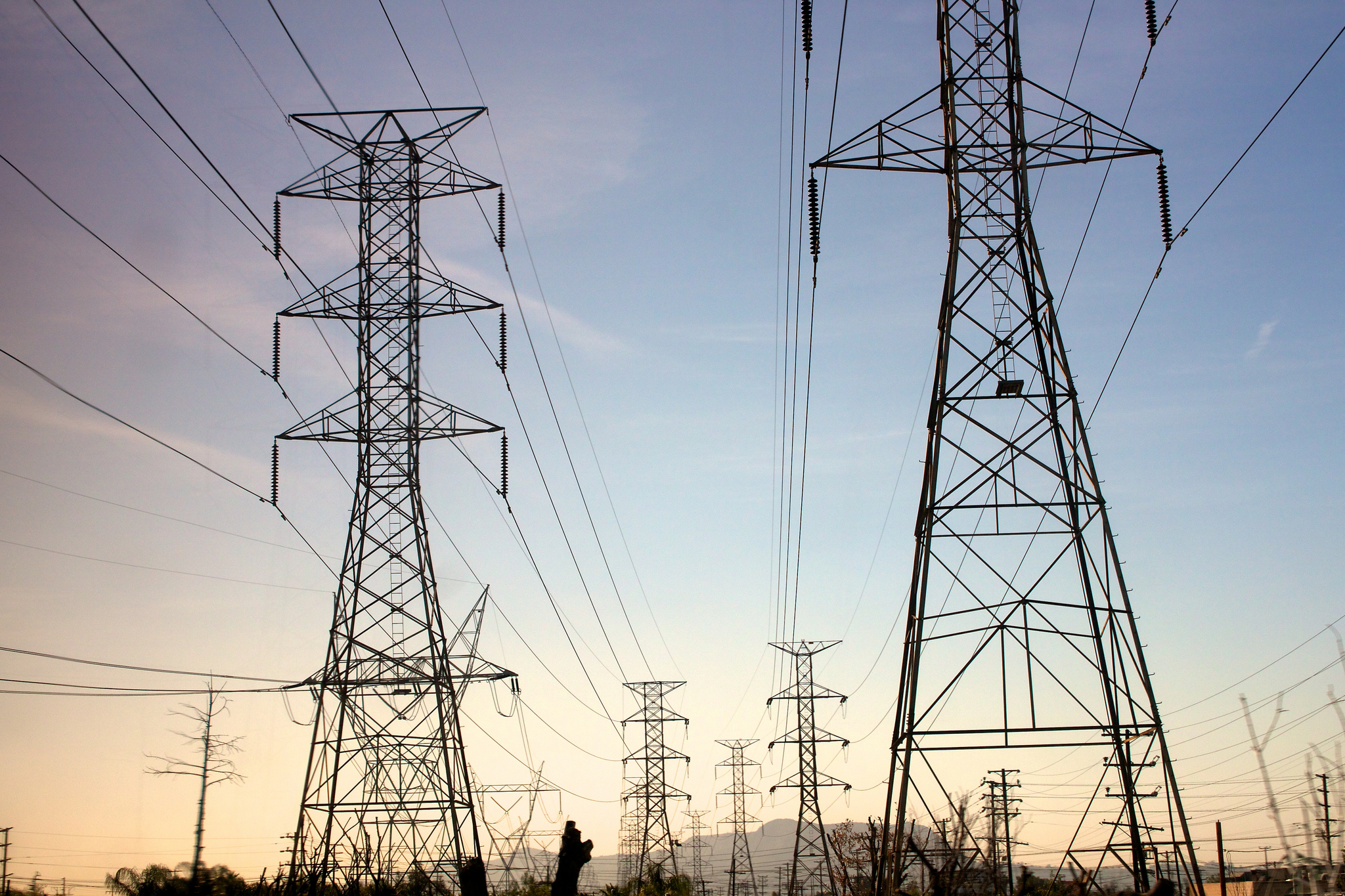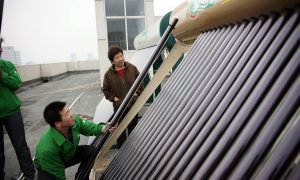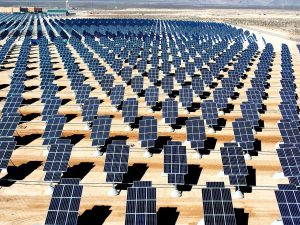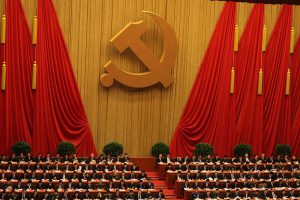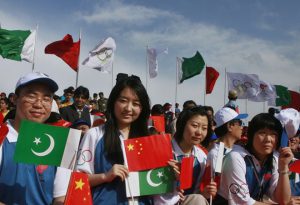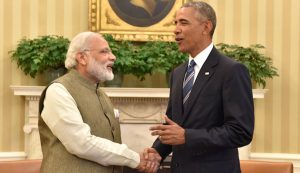It’s a particularly windy day in Jiuquan city, northwestern China, and yet most of the turbines at the Longyuan Wind Plant are motionless. The giant blades are paralysed as if they have broken down.
Inside the control room the manager is on the phone with someone from the local grid. He is trying to get permission to turn on the blades given the favourable weather conditions.
The grid employee remains unmoved:
“Stick to the quota. Do not exceed one tenth of your capacity,” he replies.
This is a scene from a broadcast by CCTV in early April. It’s probably the first time that China’s state television station has looked into the wind curtailment issue. But wind plants nationwide are all too familiar with the problem.
Thanks to huge investment and policy support, China has emerged as the world’s top wind-generating country. Wind project investments exceeded 99.3 billion yuan (US$16 billion) by the end of 2014, surpassing any other energy sources, according to China’s Wind Energy Association (CWEA). But a huge proportion of this additional capacity remains unused. The integration of wind generation has lagged behind capacity expansion, resulting in appalling waste.
See also: How China can stop wasting wind energy
Getting worse
Curtailments have plagued China’s wind power industry for years but concerns peaked last year.
According to China’s Renewable Energy Industries Association (CREIA), the country’s average wind curtailment rate stood at a record high of 15% in 2015.
In wind-rich northern provinces such as Gansu, Ningxia or Heilongjiang, rates soared to 60%.
Up to 33.9 billion kWh of wind electricity failed to connect to the grid, leading to 18 billion yuan (US$ 2.8 billion) of losses.
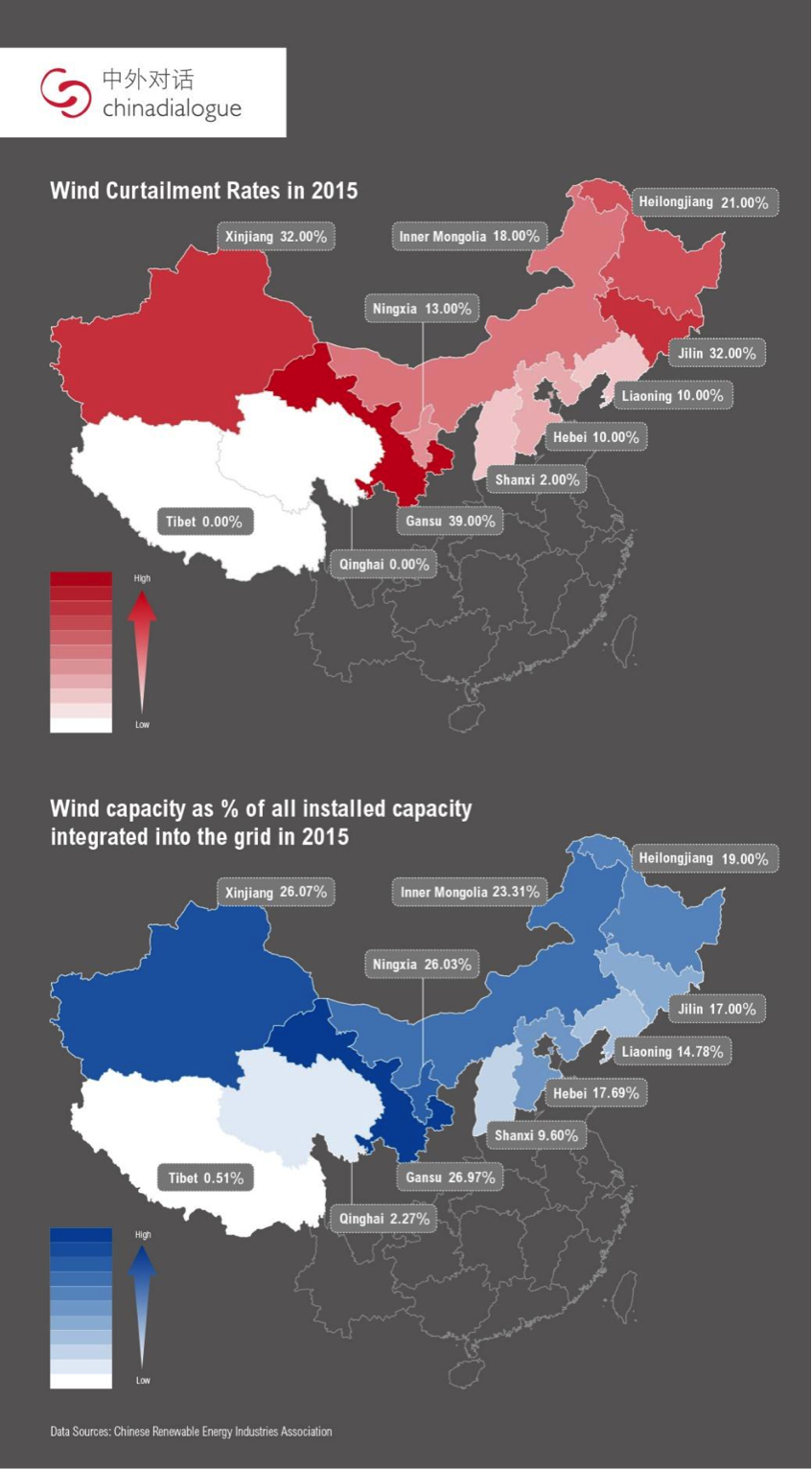
Table 1: Wind curtailment rates and efficiency of wind capacity in 2015
In only five years, China’s unused wind power has amounted to 100 billion kWh, equal to the combined output per year of the Three Gorges Dam and Gezhou Dam (the country’s top two hydropower stations).
Legal weapons
The situation has got so bad that the CWEA has filed lawsuits against some local governments which they accuse of protectionism in favour of vested coal interests.
Specifically, government departments and local grid dispatchers in Xinjiang, Gansu and Yunnan have been accused of exerting administrative power to disrupt wind production.
Qin Haiyan, secretary general of CWEA, explained that protective measures adopted in these provinces include: levying charges on wind power companies to compensate coal plant owners; and reducing the purchasing price of renewable electricity (thereby making it harder for the industry to earn profits).
This, it’s claimed, violates the ‘guaranteed purchase principle’ in China’s Renewable Energy Law.
Effective since February 2005, the Renewable Energy Law stipulates in Article 4, Item 14, that local grids should sign contracts with renewables generators to buy up all of the power that can be supplied, within the grid’s coverage.
The law sounds like good news but lacks the punitive powers needed to implement obligatory purchases.
![C:\Users\Li Ying\AppData\Local\Packages\microsoft.windowscommunicationsapps_8wekyb3d8bbwe\LocalState\Files\686\252\2_EN [50968].jpg](https://chinadialogue-production.s3.amazonaws.com/uploads/content_image/content_image/1237/wind_inforgraphic_2.png)
Table 2: wind+PV capacity vs. wind+PV generation
Super network
Technical difficulties are also responsible for wind curtailments.
Most of China’s wind and solar resources are concentrated in sparsely-populated and remote areas in the north and west. To transfer electricity generated in those areas to energy-hungry coastal cities in the east, long distance transmission capacity is needed.
To address this, China plans to upgrade transmission lines and build the world’s most capable ultra-high-voltage (UHV) transmission network.
Lines that transmit 800 kilovolts or more are usually considered UHV lines. China aims big; its UHV network aims to handle over 1,000 kilovolts.
According to the National Energy Administration, a total of 12 such UHV transmission lines are being built to connect the northwestern provinces and coastal areas.
The latest addition is a line running from the Changji Prefecture in Xinjiang to Xuancheng city in east China’s Anhui province.
The line, which is 3,324 kilometres long, is designed to accommodate currents of 1,100 kilovolts. Expected to go online in 2018, it will be the world’s longest UHV line..
Table 3: The route of China’s longest UHV transmission line
But such gigantic projects are costly and the building process is lengthy. It normally takes at least three years to build a UHV line.
For a quick fix, international experts argue that internal integration within local grids is a more feasible solution.
Anders Hove, associate director of research of the Paulson Institute in Beijing, says that local connectivity is the starting point for China’s wind-rich provinces.
“Ensuring renewable energy is integrated as well as it can be locally comes first; then between provinces,” he told chinadialogue.
Hove added: “With a less ambitious plan that focuses on solving the problem at regional level, you might be able to eventually build up to a situation where you have larger interconnection, which would benefit China.”
The area of Jing-Jin-Ji (Beijing, Tianjin and Hebei) is a suitable cluster to pilot the regional integration of renewable energy. Hebei’s wind curtailment rate reached 10% in 2015, as shown in Table 1; a baffling situation given its proximity to Beijing and Tianjin, two of the country’s biggest energy markets.
The good news is that the economic integration of Jing-Jin-Ji has been upgraded to a central government strategy, which will hasten efforts.
Jing-Jin-Ji occupies a land area roughly the same size as Germany or Texas, both of which have managed to cut curtailment rates to around 1%. With effective regional integration, the same thing could happen in Jing-Jin-Ji.
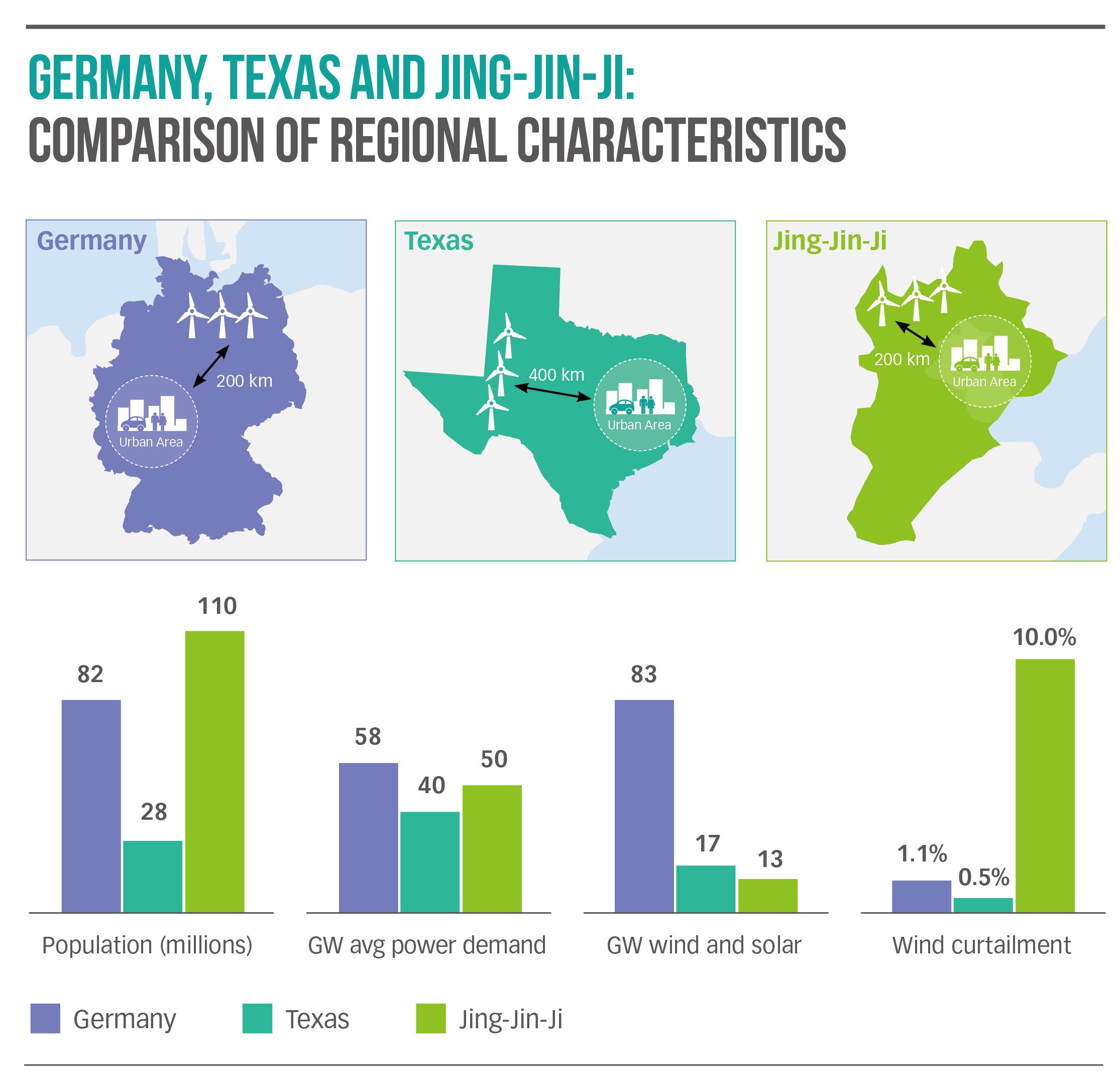
Table 4: Renewable integration in Germany, Texas and Jiing-Jin-Ji at a glance. Source: the Paulson Institute
Germany is a particularly good example, says Hove, as the distance between its wind production clusters and electricity markets is comparable to those in Jing-Jin-Ji. And Germany’s success doesn’t rely heavily on huge investments.
“In regions with a strong existing distribution grid, there is less pressure for new investment. Good distribution grids can become ‘smart grids’ by implementing the latest technology, which enables us to integrate more renewable energy while avoiding costly transmission investments,” said Andreas Kuhlmann, chief executive of German Energy Agency.
But Chinese experts disagree. Peng Peng, CREIA’s head of research, maintains that an emphasis on internal integration and local connectivity loses sight of China’s specific conditions.
She noted that nearly all wind and solar plants in China are separated from their main markets by long distances.
Electricity consumption within renewable-rich provinces are relatively low compared to coastal provinces leaving limited space for internal integration.
“Take Xinjiang, the autonomous region has an urgent need to transmit not only its wind electricity, but its coal-fired electricity to the rest of the country,” said Peng Peng.
Xinjiang’s neighbouring provinces of Gansu and Ningxia face the same quandary. The long term solution looks to be long-distance transmission lines, Peng Peng added.
Energy market reform
While technical problems seem relatively easy to resolve, fixing intrinsic systemic constraints is more daunting.
China’s power sector is designed to favour coal-fired power plants through economic incentives. The central government currently spends double the amount on coal subsidies than on renewables.
Coal remains China’s primary energy source and in 2015 generated 67% of the country’s electricity.
This is unlikely to change in the short term even though China has vowed to reduce its reliance on coal.
Local authorities fear that phasing out coal too briskly will result in short-term economic losses and mass unemployment. This explains why many local governments cling to their coal-fired power plants, even at the cost of renewable growth.
China’s overall electricity consumption only increased by 0.5% in 2015, the lowest level in decades. Declining demand coupled with redundant capacity is threatening the very existence of coal-fired power plants, prompting local governments to take rare protective measures.
Take Yunnan, for example. While the southwestern province boasts the country’s richest water resources, in drought season – October to April – the province’s hydro-power generation drops remarkably. Luckily, these rainless months overlap with the windy season, so wind curtailments have never been an issue.
Yet, the Yunnan provincial government still decided to levy charges on wind plants to subsidise the struggling coal-fired generators. Renewable industries regard the move as meddlesome.
For many provinces swift tax revenues are too strong a temptation to ignore.
“It usually takes four or five years for renewable energy to contribute directly to the local economy. Whereas coal-fired plants can produce large amounts of tax revenue as soon as they start generating,” said Peng Peng.
To make matters worse, coal-fired electricity is priced cheaper than wind or solar electricity, even though the generation of the latter involves extremely low marginal costs.
“Coal-fired electricity is priced at about 0.45 yuan (US$0.07) per KWh. But the price doesn’t contain the costs for waste disposal treatment. The generation of coal-fired electricity involves huge amounts of water use.”
“The real cost is close to 30 yuan (US$4.6) per ton. If the pricing takes into account this factor, would it still be possible for coal-fired electricity to be priced lower than renewables?” said Peng Peng.
Industry insiders expect to see renewable energy compete with coal on an equal footing.
Currently, coal-fired plants can settle full payments with local grids or load centres for what they generate on a monthly basis; whereas wind and solar plants only get around one third of the payments. In some extreme cases, the remaining payments can be defaulted by two or three years.
International experts attribute this oddity to the absence of a spot market in China.
In the US, the power system will always dispatch renewable energy with priority over other sources of generation, due to their lowest marginal costs (partly because the country has a very liquid spot power market).
Green dispatch
A green power dispatch system that prioritises renewable generation is indispensable for the creation of an effective spot energy market in China.
China first announced that it would promote “green power dispatch” to prioritise renewable energy in a joint US-China presidential statement in September 2015.
The pledge was reinforced in a presidential statement issued in March 31, prior to the official signing of the Paris Climate Agreement in New York.
In this statement, China vowed to enhance the implementation of green and low-carbon policies to move public investments away from projects causing heavy pollution and high emissions.
Germany’s experience may well illustrate how a green dispatch system works. With such a system in place, renewable plants are the first to be used and the last to be turned off. Grid operators will only switch to coal and other fossil-fuel energy until all the renewable generation is integrated onto the grids.
Kuhlmann said Germany’s current draft legislation makes it clear that curtailment rates of more than 3% are unacceptable and renewable generators will be compensated at least 95% for curtailments.
In Germany, renewables will be compensated by 95% for curtailments
Recent policy shifts
To better implement the country’s Renewable Energy Law, the National Energy Administration has released additional regulations.
For the first time, the rules state that curtailed renewable energy can be compensated for. This occurs when contracts prioritising renewable generation fail to be carried out, with non-renewable generators occupying transmission lines for reasons not associated with grid security.
The strength of the scheme is not comparable to that of the German mechanism but it’s a big step forward in elevating the status of renewable energy in China.
Recently, the city of Zhangjiakou in Hebei has emerged as a hotspot for renewable investments, it has been designated by the State Council as the country’s renewable energy ‘demonstration zone’.
It already has a 500 kilovolts transmission in place linking it with major power markets within Hebei as well as Beijing and Tianjin.
According to the estimates of China Electricity Council, up to 6.27 million kilowatts of renewable generation was integrated onto the grid by the end of 2014 in Zhangjiakou. Wind generation accounted for nearly 95%.
Zhangjiakou’s plan to increase the penetration of renewables in its energy mix is ambitious. By 2020, at least 55% of the city’s electricity will be generated by renewables, which would easily eclipse other Chinese cities.
But Zhangjiakou’s model cannot necessarily be applied elsewhere. It is the co-host of the 24th Winter Olympic Games, and the success of renewable integration there is largely the result of vigorous policy support.
Long road ahead
For all the pledges to boost renewables’ development, China’s coal-fired capacity is still growing.
Renewable industry insiders are worried that local governments will stick to their traditional mindset of incentivising coal-fired plants while paying lip service to renewables. Their worries are not entirely groundless.
But the surging tide of renewables has already become unstoppable. If China wants to peak its carbon emissions by 2030, non-fossil fuels would have to contribute 20% to primary energy consumption. With current curtailment rates lingering on, it may well be a mission impossible to realise these goals.
